Dory's new website is being developed on the fly. Stay on this site to view the most recent content. To view Dory's entire old site click here. Check back soon - more exciting updates are coming!
Education - Licensure - Certification
Specialized Coursework and Certification
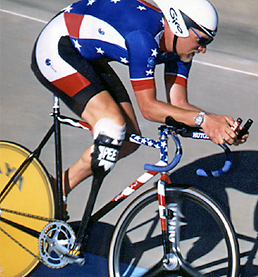
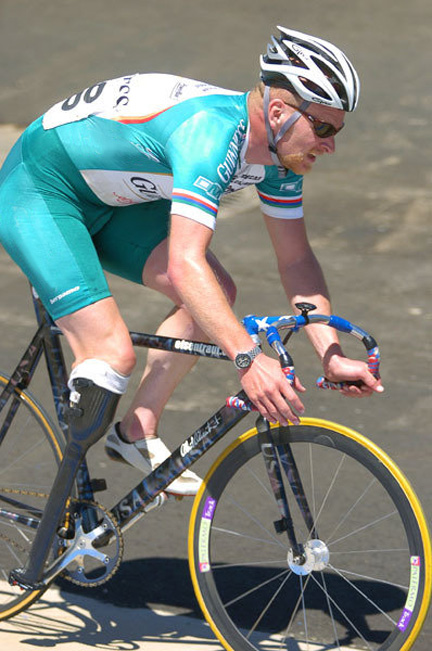
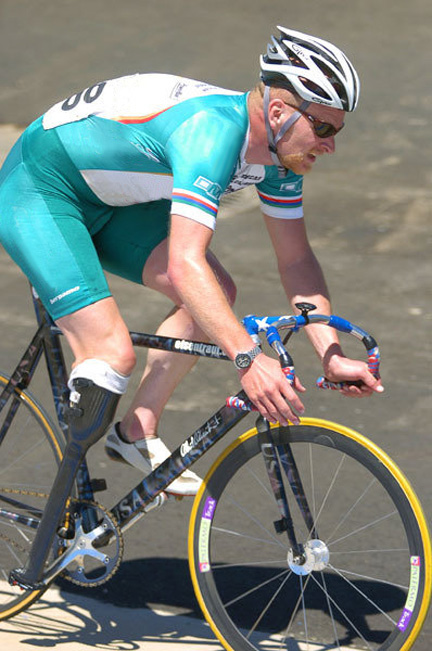
Present History: Dory is a Licensed and Certified Practitioner of Prosthetics and Orthotics in California’s Monterey Bay Area. In 2002, Dory transitioned from international cycling to full time pursuit of his Prosthetic and Orthotics career. His last championship event was the 2002 World Championship. He believes his success in competitive cycling continues, through his efforts and others of his generation, to bring awareness to amputee cycling. Dory is as proud of this as he is of his gold medals.
Cycling continues to be an important part of Dory’s life as career and family responsibilities allow. He married an intelligent, beautiful and talented woman; together they have two wonderful children who amaze and delight him. Dory has found that family life takes more time and energy than his training ever did.
Dory’s creative and innovative ideas provided the groundwork for the prosthetic design (peg leg/adjustable socket) that was instrumental in his Gold medal performance in the 1996 Georgia Paralympics. He has been making custom 3S liners and adjustable back wall sockets since 1995, posterior for below the knee amputees and anterior for above the knee amputees.
Dory was mobbed by curious competitors after his 1996 Kilo win. All of the cyclists wanted to see Dory’s prosthetic leg up close; it was significantly different from theirs. His peg leg design utilized physics to increase the efficiency of the leg’s force through it’s prosthesis. Variations on Dory’s prosthetic are now the design of choice in worldwide competitive and recreational amputee cycling. The design revolutionized amputee cycling much like the Fosbury Flop revolutionized the high jump.
Dory is working on “Project Socket”, a study of the efficiency of energy expenditure in various prosthetic socket designs and suspension systems. He would like to change the way the ‘World of Prosthetics’ perceives sockets and suspension systems. It is Dory’s hope that his study will assist all BK/TT and AK/TF amputees (non-athlete and athlete alike) in maximizing their functional mobility while reducing their energy expenditure.
To Participate or Contribute to Project Socket, Contact Dory.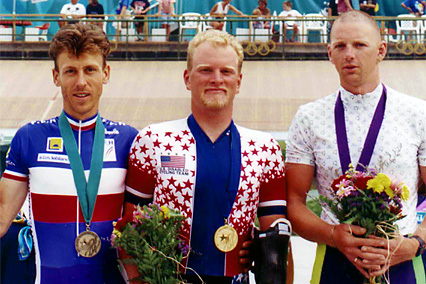
Dory’s ride to Paralympic history began with "fragility". It was a typical morning ride with his teammates in 1993 when a car came from nowhere and slammed into them all, killing his friend, mangling his leg, and placing him in a coma for seven days. Life changed in an instant for Selinger, but not just in the physical sense. Through the grief and the heartache of a lost teammate, through the pain and struggle of an agonizing rehabilitation, one constant, focus helped Selinger persevere, the bike. It was a love for cycling that rescued him from despair, inspired him to regain his strength, and drove him to become something even greater than himself.
Selinger is one of American's best-known Paralympic cyclists. He has claimed repeated national titles in track, road racing, and time trial competitions in the Disabled Division at the U.S. Cycling Championships. Dory began by winning Gold at the 1996 Paralympic Games in Atlanta, GA. He then was victorious at the 1998 and 2002 World Championships and the 1999 and 2001 European Championships. He was invited by the International Cycling Union (UCI) to participate in the 100th Birthday Celebration to commemorate the establishment of Olympic Cycling. Dory completed the April 2000 Centennial Celebration ride from Paris, France to Lausanne, Switzerland with Europe’s cycling elite.
Dory has held two world records as well as every U.S. velodrome record for a cyclist in his classification.
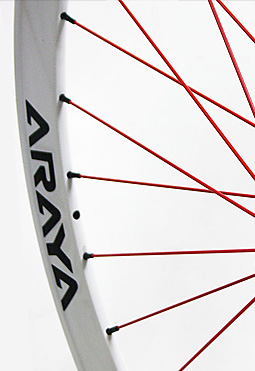
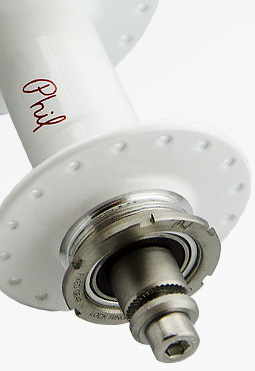
Dory is hard at work on Project Socket; a Scientific Study of the efficiency of energy expenditure used in various prosthetic socket designs and suspension systems. Dory wants to change the way the socket it perceived in the world of Prosthetics. It is his hope that his study will assist all BK/TT and AK/TF amputees (non athlete and athlete alike) in maximizing their functional mobility while reducing their energy expenditure.

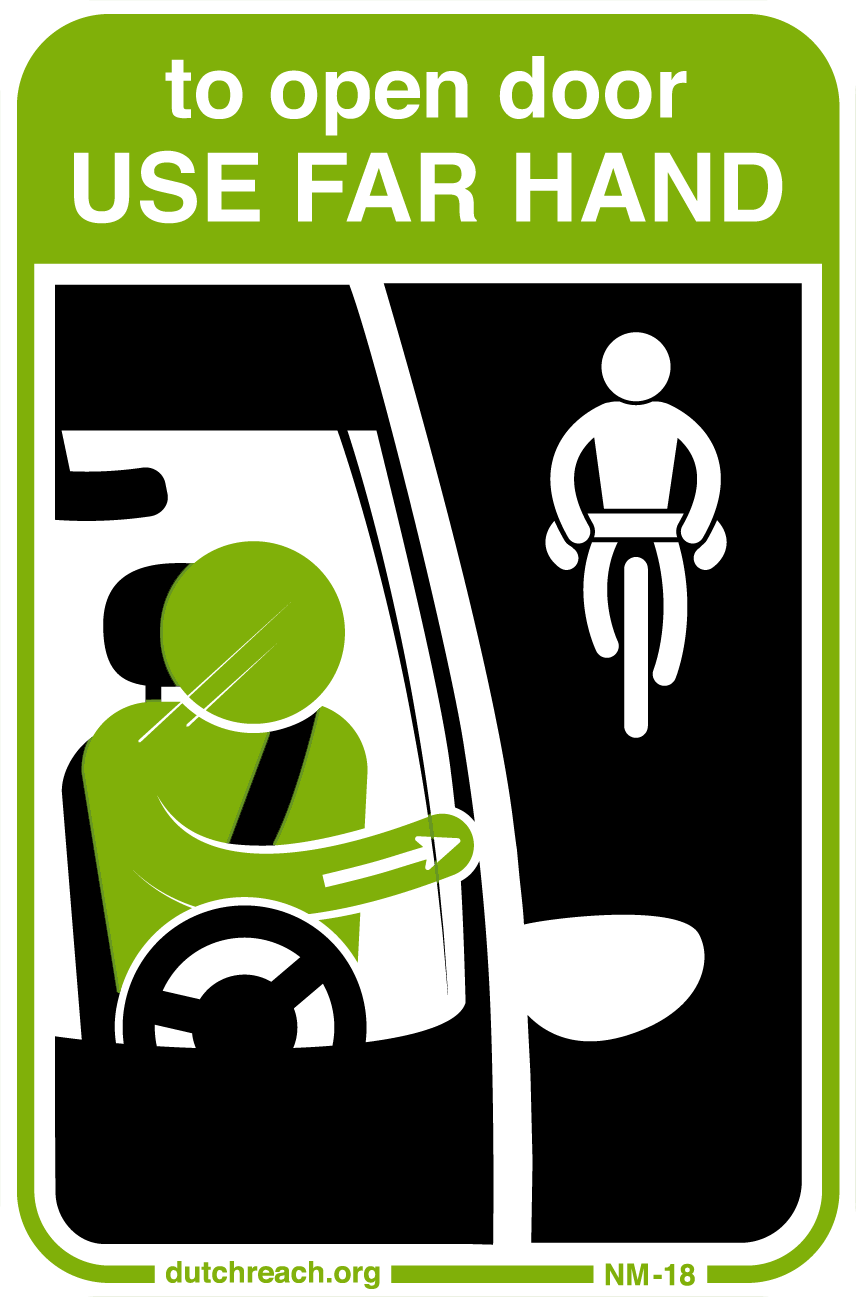
The Dutch Reach is a practice of opening a car door with the hand furthest from the handle, so in the U.S., the right hand of the driver, or right hand of the passenger. This means motorists and passengers are forced to turn their body towards the door, allowing them the opportunity to look first into the rear view mirror, and then over their shoulder to see whether or not a cyclist or motorcyclist is approaching from the rear.
Learn more at DutchReach.org and help "Teach the Reach".
Below are two helpful videos demonstrating the Dutch Reach (Produced by KIA Motors and Outside Magazine)